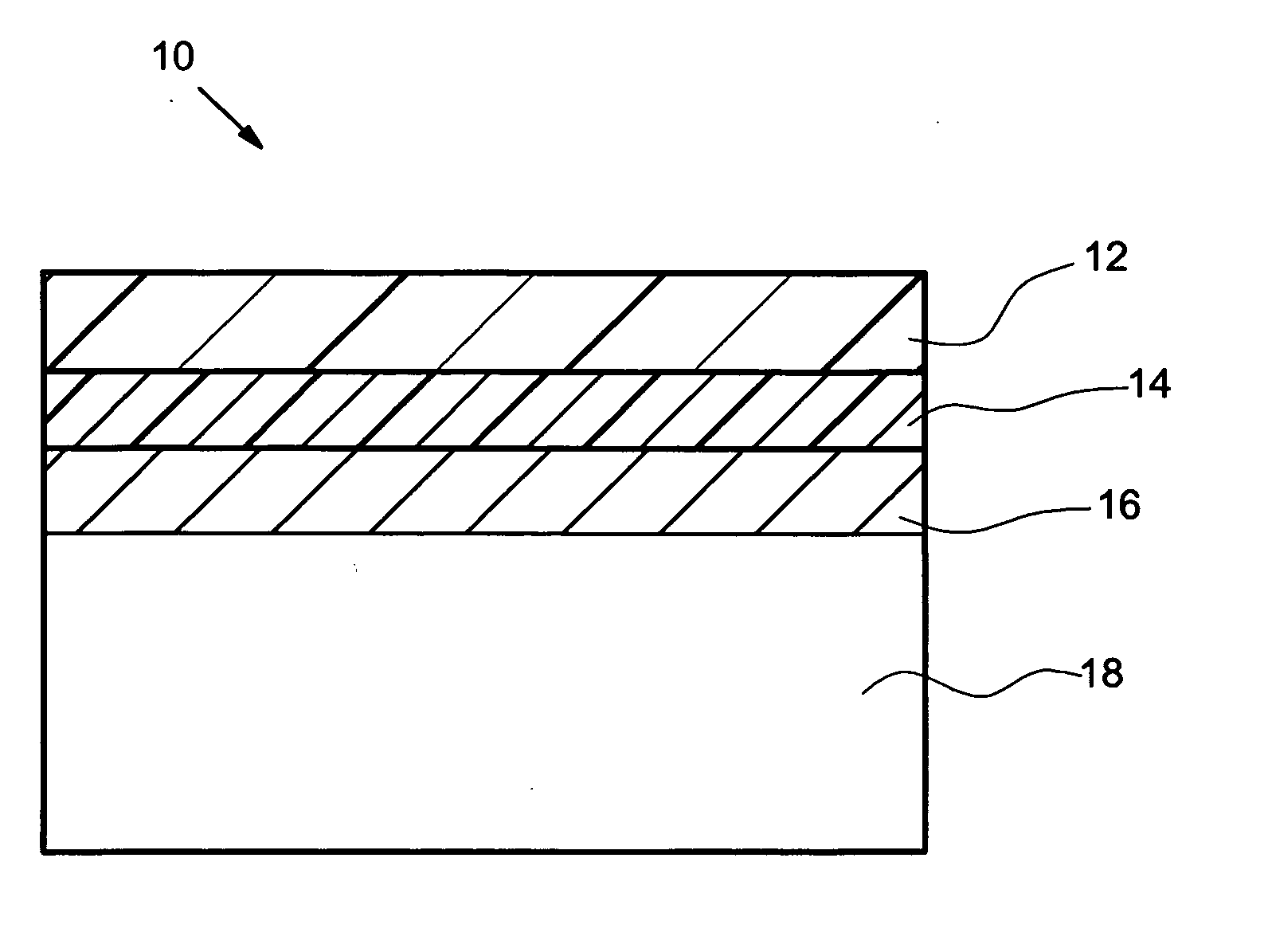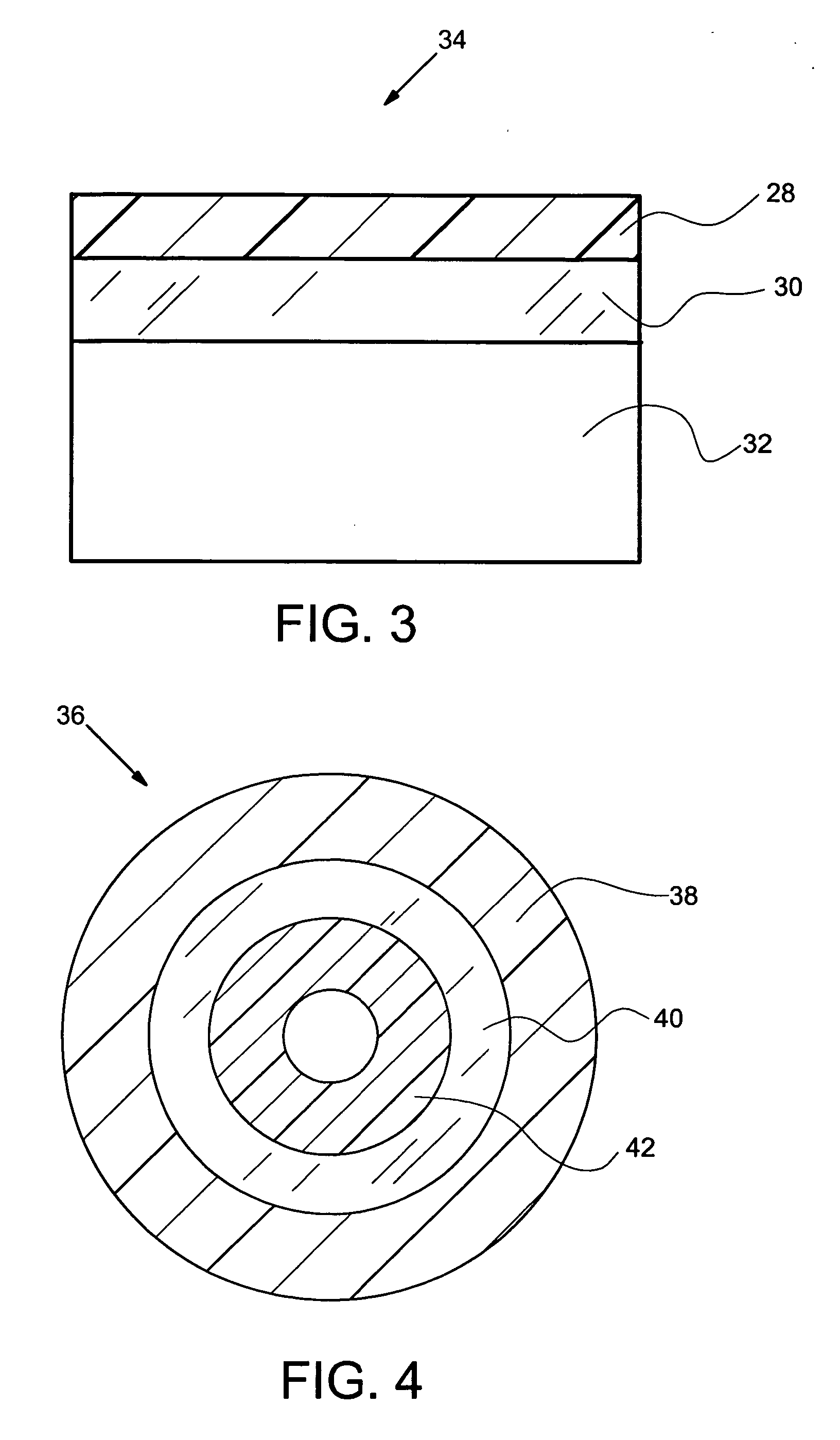Self-cleaning coatings applied to solar thermal devices
a technology of solar thermal devices and coatings, applied in the direction of solar heat collector safety, liquid/solution decomposition chemical coatings, lighting and heating apparatus, etc., can solve the problems of degrading the performance of the coating, exposing the surface of the coating, and soiled, so as to resist contamination by dirt
- Summary
- Abstract
- Description
- Claims
- Application Information
AI Technical Summary
Benefits of technology
Problems solved by technology
Method used
Image
Examples
example i
[0035] To a liter volumetric flask is added Al(OPr)3 and concentrated HCl. A white solid forms which dissolves completely on adding water. About 50 mg of TiO2 nanocrystals is added to the flask, which is sonicated for 5 min. Water is added to give 1 liter of slurry / solution. The solution is applied to a glass substrate, heated to 270° C. for 15 min, then cooled to room temperature. When washed, the % transmission is identical to that of the glass sample. An organic dye is applied to the coated surface, illuminated with a UV lamp for about 10 h and the intensity of the dye is reduced to about ½ of the initial value. A sample with a dot of dye is placed outside in sunshine and the intensity of the dye is reduced. Dye on bare glass is run at the same time, but there is no decrease in the intensity.
[0036] The same result is obtained on replacing Al(OPr)3 with Ti(OPr)4, Zr(OPr)4, Si(OEt)4, Sn(OBu)4, SnCl4, SnBu2O / acetate, Fe(OEt)2, Mg(OEt)2, or CaO. In all cases, the self-cleaning prope...
example ii
[0041] Photoactive nanocrystals can be entrained in the gas phase, using a carrier gas to move the nanocrystals, and added to the vapor stream of a chemical vapor deposition process. A carrier gas containing TiO2 nanocrystals is brought into contact with a gas stream containing SnCl4 and a fluorinated ester. The gas / vapor mixture is brought in contact with a heated glass substrate whereupon a film of SnO2:F forms. A dot of dye decreases in intensity of illumination, while a film of SnO2:F formed under similar conditions (but without the photoactive nanocrystals) does not show self-cleaning properties. This could be a useful procedure for the last step of a CVD process for forming a multi-layer anti-reflective coating; which will result in the formation of a self-cleaning anti-reflective coating.
[0042] Potentially, the photoactive nanocrystals could be a component of sputtering targets. On sputter deposition, a film is obtainable having embedded photoactive nanocrystals, and thereby...
example iii
[0043] To a flask is added CaO, trifluoroacetic acid, HOPr and cyclohexanol. Nanocrystals of TiO2 are added and the solution / slurry sonicated for 5 min. The solution is applied to a glass substrate heated to 300° C. After washing with water the % transmission is found to be about 94%, while the bare glass prior to coating has a % transmission of about 89%. A dot of dye is applied to the coating, which after illumination is reduced in intensity. The coating provides both anti-reflective and self-cleaning properties to the substrate.
[0044] Other examples are obtained with Mg, Si, and Al. Mixtures can also lead to self-cleaning anti-reflective coatings. For example, a 1:1 mixture of the Al and Si reagents detailed above provides a film on glass having a 91% transmission, while the bare glass has a 89% transmission, and excellent self-cleaning properties.
[0045] The photoactive nanocrystalline material can be used to create air pockets and pores in the film, which leads to the formatio...
PUM
| Property | Measurement | Unit |
|---|---|---|
| Temperature | aaaaa | aaaaa |
| Temperature | aaaaa | aaaaa |
| Temperature | aaaaa | aaaaa |
Abstract
Description
Claims
Application Information
 Login to View More
Login to View More - R&D
- Intellectual Property
- Life Sciences
- Materials
- Tech Scout
- Unparalleled Data Quality
- Higher Quality Content
- 60% Fewer Hallucinations
Browse by: Latest US Patents, China's latest patents, Technical Efficacy Thesaurus, Application Domain, Technology Topic, Popular Technical Reports.
© 2025 PatSnap. All rights reserved.Legal|Privacy policy|Modern Slavery Act Transparency Statement|Sitemap|About US| Contact US: help@patsnap.com



